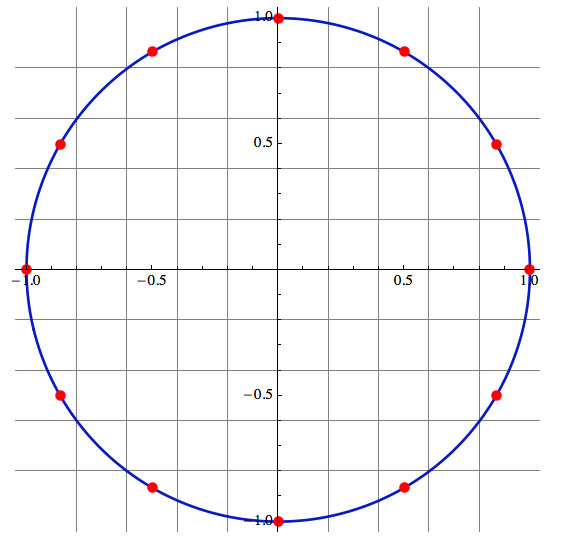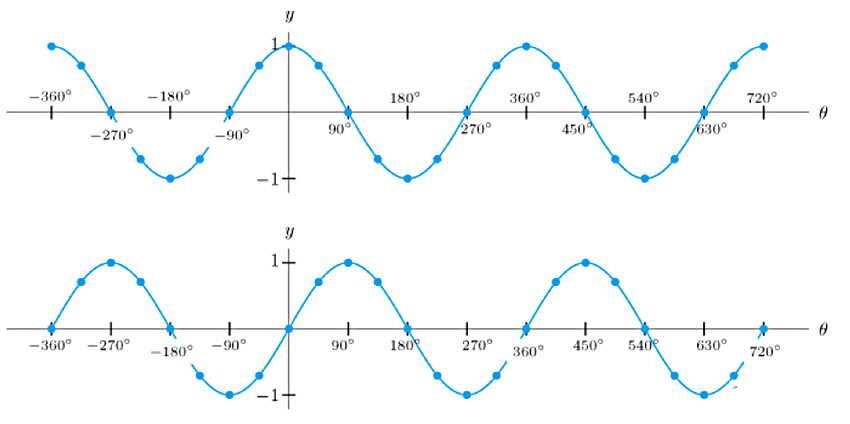[7.1-3] Periodic functions
graph paper
Ferris wheel diagram
Unit circle with 30 degree dots
Blank unit circle
$\sin \theta$ and $\cos \theta$ graphs ($\theta$ in degrees).
Unit circle, sine, cosine
We'll be working with a "unit circle": a circle centered on the origin, with a radius of 1.

- Imagine an arrow of length 1, extending from the origin to the point (1,0). Call this "$0^{o}$".
- Keeping the tail of the arrow at the origin, rotate the arrow counter-clockwise by, $30^o$. (This is 1/3 of a $90^o$ rotation). Draw on your diagram, your unit arrow when it's been rotated by $30^o$
- Using your unit circle diagram, estimate the coordinates of the tip of the arrow:
- $x=$_____
$y=$_____
- Draw a line from the tip of the arrow straight down until it touches the $x$-axis. You now have a right-triangle. What is the length of the hypotenuse? What are the lengths of the other sides? (Use the coordinates of your arrow tip...)
- Using trigonometry: "SOH-CAH-TOA" write a formula involving $\sin(30^o)$ for one of the sides of the triangle. Write a formula involving $\cos(30^o)$ for another side of the triangle.
- Use a calculator to look up $\sin(30^o)$ and $\cos(30^o)$. Does your formula agree (approximately) with the sides of your triangle that you guessed based on your estimates of the coordinates of the arrow tip?
It turns out that...
If you rotate the unit-length arrow by $\theta$ degrees away from 0 (positive direction is counterclockwise), then the coordinates of the tip of the arrow will be given by: $$(x,y)=(\cos \theta, \sin \theta)$$
- Make a table with columns for $\theta$, $\cos\theta$, $\sin\theta$. Use your unit circle to fill in the $\cos$ and $\sin$ values for $\theta=0$ and $\theta=90^o$. Use your calculator to fill in the values for $30^o$ and $60^o$. Extend your table (in increments of $30^o$) to $360^o$. You shouldn't need your calculator any more, but use the values you already have and your unit circle diagram to fill in the table.

Which graph is $\sin\theta$? $\cos\theta$?- What would be the cosine and sine of $390^o$? (Where would the unit arrow be?)
- Of $\theta=-60^o$?
- Of $\theta=900^o$?

- How many degrees does it take before the pattern starts repeating again for each function? (This is the "period").
- What is the midline of each function?
- What is the amplitude of each function?